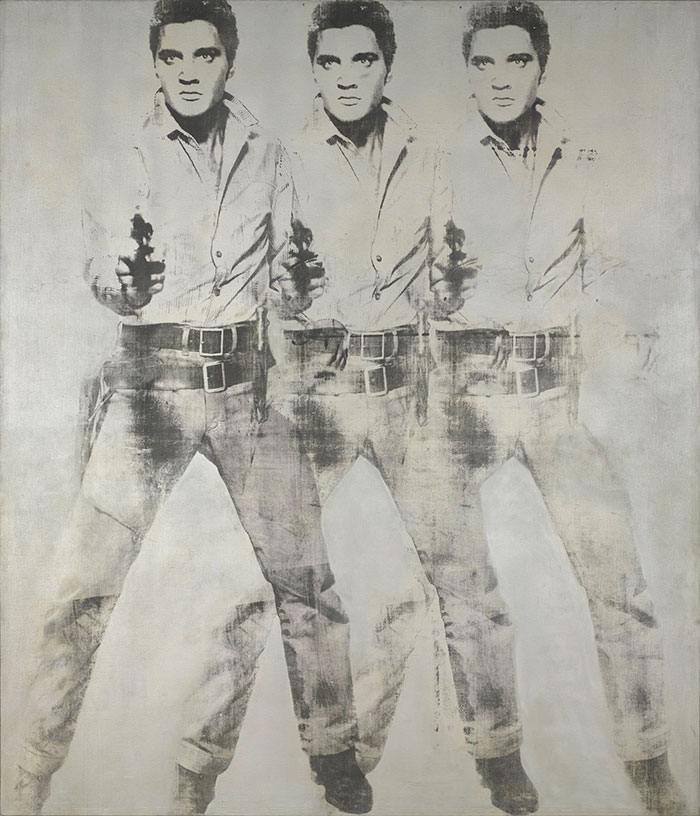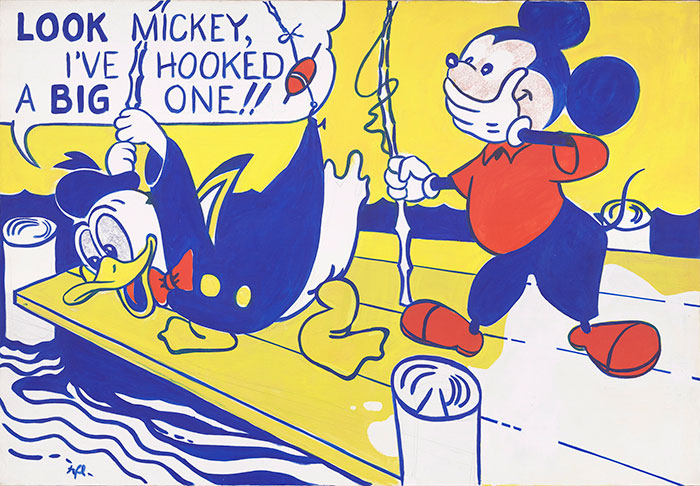The history of the Pop Art movement is uncovered as it becomes the subject of a major retrospective at the Art Gallery of NSW.
It turned mundane subjects into multimillion-dollar artworks, but before Pop Art got, well, popular, it was rejected by the establishment. Now the history of the movement is uncovered, as it becomes the subject of a major retrospective at the Art Gallery of NSW.
Comic books. Basketballs. Swear words. Starting in the 1960s, Pop Art took everyday items and put them on gallery walls, changing how we think about life – and art – forever. Now the Art Gallery of NSW is chronicling the movement in Pop to popism, an exhibition of some 200 works that span several decades and numerous international collections. The curator behind the show, Wayne Tunnicliffe, explains why Pop Art is one of the most influential art events of the 20th century.
Pop Art hit the scene in the early 1960s, and it brought all these references from the everyday world. There was a big increase in mass media; television became widespread, as did magazines, newspapers, comic books, advertising… Madison Avenue and the Mad Men hit their peak in the 1950s and 60s. So Pop Art took this visual culture people had been saturated with and said, actually, this can be art as well.
Roy Lichtenstein's Look Mickey (1961) is his first ever comic book work, and it changed art forever. Taking that sort of imagery and putting it on the wall of a gallery was a really radical gesture. I mean, this was Mickey and Donald Duck. It's Disney! It went against all the rules that say art is about the high and the esoteric. This showed art can be accessible to your world.
MoMA had a forum at the end of 1962 and all but one person spoke against Pop Art. The people who liked it thought it was new and exciting, and that it spoke to how people were living. The people against it saw it as vulgar. That's a word that comes up often in early reviews. Critics saw it as breaching what art was supposed to be about — which was these high thoughts and feelings — by making it banal.

Triple Elvis (1963) by Andy Warhol.
In the 1960s, there was a lot more exchange happening between people and places and ideas. Travel got cheaper. Australians like Clive James, Robert Hughes, Germaine Greer and Martin Sharp were going to London and participating in culture there. Australian Pop Art marks this moment. We've constructed the show from an Australian perspective, looking at the art we've known here, what generated it, and how we were connecting with the world.
It was still a conservative time in Australia. A work in the show by Mike Brown (Hallelujah, 1965) contains some swear words, and he was arrested by the police and charged with obscenity for it. He was sentenced to six months of hard labour, but after a two-year appeal process that was reduced to a fine.
In early Pop, a lot of the artists were quite pro-consumerism and the media. In the second wave, in the later 60s, the artists were more disillusioned with the world. Martin Luther King had been assassinated, and Robert Kennedy, too. And the Vietnam War was happening. The optimism at the beginning of the decade was diminishing by end. Some of the work of this period is very political and exaggeratedly erotic.
At the end of the 1970s, you get this third wave of artists looking at commercial and popular culture in a really sophisticated way. There are people like Jeff Koons, who are seen to celebrate all that's banal and kitsch — this moment of capitalist triumph — but at the same time, what they're presenting back to us is a world we've all invented. Our show has one of his pieces displaying basketballs — these very mass-produced consumer goods — in a gallery. With Koons, you never know if he is critiquing or celebrating. There's a real edge to his work.
Pop Art is one of the great 20th-century art movements that have changed how we look at the world. It's a style everyone recognises. They might not know much about art, but they know an Andy Warhol or a Roy Lichtenstein when they see one. And because it was often inspired by commercial art, you get this funny thing happening where many modern advertising campaigns now copy these artists — so their work is reflected back on itself. What's great about Pop Art is that it's focused on the world we live in. It's examining what everyday life is all about.

Look Mickey (1961) by Roy Lichtenstein.
TOP 3
The curator behind Pop to popism, Wayne Tunnicliffe, takes his pick of the works on show.
Look Mickey (1961) by Roy Lichtenstein
"This was a ground-zero moment for Pop Art, and it's an amazing image still. Mickey is standing there laughing at Donald, who has flung his fishing rod and caught his own tail. Disney was enormously popular at this time, and this work is making it not just the stuff of comic books, but actual art."
Helga Matura with her Fiancé (1966) by Gerhard Richter
"These days Richter is really well known for his abstract paintings, but in the 1960s he was painting Pop works based on tabloid-media imagery. This very glamorous, bourgeois woman looks to be sitting proudly with her fiancé, but she's actually a high-class prostitute. The image appeared in the media in 1966 after she was found murdered. So the painting looks like it's presenting one story, but it's actually about another story altogether."
Triple Fronted (1987) by Howard Arkley
"An amazing suburban image; one of those 1950s houses you see everywhere, but painted in vivid fluoro colours. This was when Arkley started painting suburban houses, and it's one of the most iconic images from that series. It's been in a private collection, but earlier this year I managed to buy it for the Art Gallery of NSW. It hasn't been shown publicly in years."